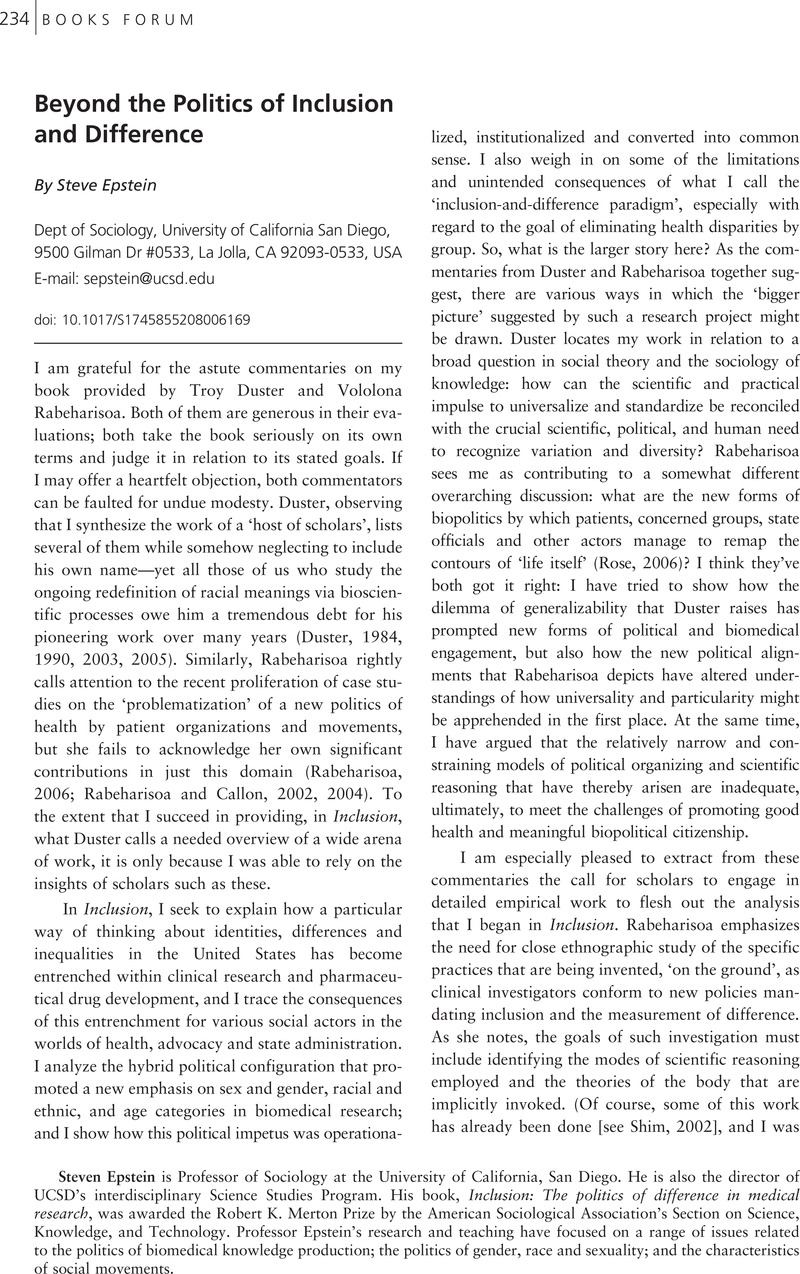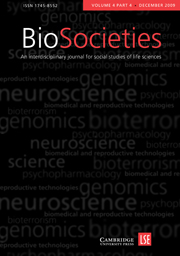No CrossRef data available.
Article contents
Beyond the Politics of Inclusion and Difference
Published online by Cambridge University Press: 01 June 2008
Abstract
An abstract is not available for this content so a preview has been provided. Please use the Get access link above for information on how to access this content.

- Type
- Books Forum
- Information
- Copyright
- Copyright © London School of Economics and Political Science 2008
References
Duster, T. (1984). A social frame for biological knowledge. In Duster, T. & Garrett, K. (Eds), Cultural perspectives on biological knowledge, 1–40. Norwood, NJ: Ablex.Google Scholar
Duster, T. (2003). Buried alive: The concept of race in science. In Goodman, A. H.Heath, D. & Lindee, M.S. (Eds), Genetic nature/culture: Anthropology and science beyond the two-culture divide, 258–277. Berkeley: U California Press.Google Scholar
Epstein, S. (2007a). Inclusion: The politics of difference in medical research. Chicago: U Chicago Press.Google Scholar
Epstein, S. (2007b). Patient groups and health movements. In Hackett, E.J., Amsterdamska, O., Lynch, M. & Wajcman, J. (Eds), The handbook of science and technology studies, 499–539. Cambridge, MA: MIT Press.Google Scholar
Gamson, J. (1995). Must identity movements self-destruct? A queer dilemma. Social Problems, 42, 390–407.Google Scholar
Haraway, D.J. (1997). Modest_witness@second_millennium.Femaleman_meets oncomouse. New York: Routledge.Google Scholar
Rabeharisoa, V. (2006). From representation to mediation: The shaping of collective mobilization on muscular dystrophy in France. Social Science & Medicine, 62, 564–576.CrossRefGoogle ScholarPubMed
Rabeharisoa, V., & Callon, M. (2002). The involvement of patients’ associations in research. International Social Science Journal, 54(171), 57–63.Google Scholar
Rabeharisoa, V., & Callon, M. (2004). Patients and scientists in French muscular dystrophy research. In Jasanoff, S.(Ed.), States of knowledge: The co-production of science and social order, 142–160. London: SAGE.Google Scholar
Rose, N. (2006). The politics of life itself: Biomedicine, power, and subjectivity in the twenty-first century. Princeton, NJ: Princeton UP.Google Scholar
Shim, J.K. (2002). Race, class, and gender across the science-lay divide: Expertise, experience, and ‘difference’ in cardiovascular disease. PhD dissertation, Sociology, U California, San Francisco.Google Scholar
Smart, A., Tutton, R., Ashcroft, R., Martin, P., Balmer, A., Elliot, R. et al. (forthcoming). Social inclusivity vs analytical acuity? A qualitative study of UK researchers regarding the inclusion of minority ethnic groups in biobanks. Medical Law International.Google Scholar


